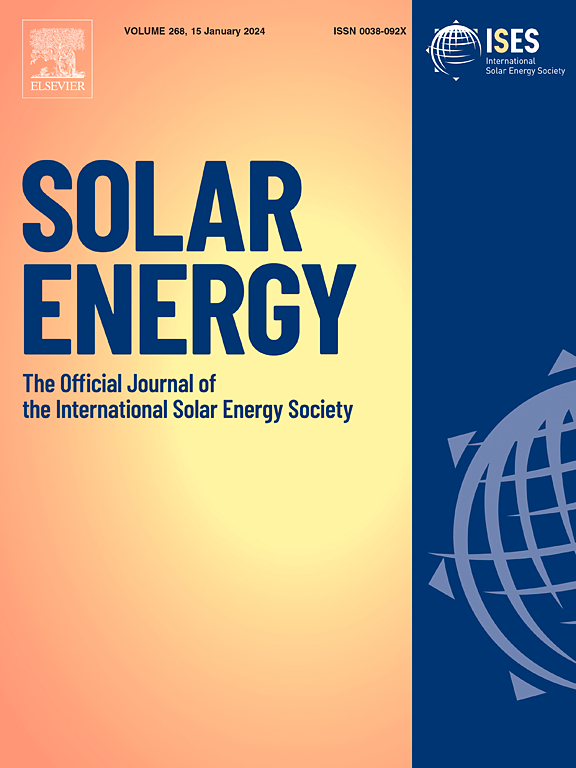一种独特的建筑综合发电系统多因素参与的性能评估
IF 6
2区 工程技术
Q2 ENERGY & FUELS
引用次数: 0
摘要
为提高光伏(PV)电池和热电发电机(TEG)模块的效率,本研究提出了一种独特的建筑集成发电系统,该系统由光伏(PV)电池、热电发电机(TEG)模块、季节性可调微通道热管(MCHP)阵列和形状稳定相变材料(PCMs)板组成,称为PV- mhcp - pcm -TEG系统。三通阀可以根据气候自动调整方向,MCHP阵列和PCM板的结合可以增强传热,降低光伏电池温度。首先,建立了系统的数学模型,并在中国武汉进行了实验验证。然后对独特的建筑综合发电系统进行了多因素综合性能评价。最后,考察了PCM板对PV-MHCP-PCM-TEG体系性能的影响。结果表明,该系统年平均发电效率为16.6%,输出功率为329.3 kWh。与PV系统相比,该系统的输出功率提高了10%,电池最大温度降低了26.8℃;与PV- teg系统相比,输出功率提高了5.2%,电池最大温度降低了17.3℃。本文章由计算机程序翻译,如有差异,请以英文原文为准。
Multi-factors-engaged performance assessment on a unique building integrated power generation system
A unique building integrated power generation system, by incorporating a photovoltaic (PV) cell, thermoelectric generator (TEG) modules, a seasonally adjustable microchannel heat pipe (MCHP) array and shape stabilized phase change materials (PCMs) plates, named PV-MHCP-PCM-TEG system was proposed to improve the efficiency of both the PV and TEG in this study. The three-way valve can automatically adjust its direction based on the climate, and the incorporation of MCHP array and PCM plates could enhance the heating transfer and reduce the PV cell’s temperature. Firstly, the mathematical model of the system was developed and verified by experiment in Wuhan, China. Then multi-factors-engaged performance assessment on the unique building integrated power generation system was conducted. Finally, the effect of PCM plates on performance of PV-MHCP-PCM-TEG system was performed. The results show that the system has an annual average power generation efficiency of 16.6% and a power output of 329.3 kWh. Compared to the PV system, the power output of this system increased by 10% and the maximum PV cell’s temperature decreased by 26.8℃, and compared to the PV-TEG system, the power output increased by 5.2% and the maximum PV cell’s temperature decreased by 17.3℃.
求助全文
通过发布文献求助,成功后即可免费获取论文全文。
去求助
来源期刊

Solar Energy
工程技术-能源与燃料
CiteScore
13.90
自引率
9.00%
发文量
0
审稿时长
47 days
期刊介绍:
Solar Energy welcomes manuscripts presenting information not previously published in journals on any aspect of solar energy research, development, application, measurement or policy. The term "solar energy" in this context includes the indirect uses such as wind energy and biomass
 求助内容:
求助内容: 应助结果提醒方式:
应助结果提醒方式:


